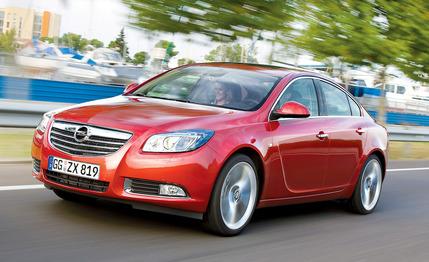 Mini Test Road Test
Mini Test Road Test
For years, the Opel Vectra has been the stalwart for General Motors in Europe. In 2005, this mid-size family sedan, which is also sold in the U.K. as a Vauxhall, was given an extensive face lift. At the same time, GM decided to adopt the European style of Opel for its Saturn brand in the U.S. So, superficially, the Saturn Aura is a lot like the Opel Vectra.
Now the Vectra is consigned to history, and its place is taken by a bigger and more sophisticated car, the Insignia. So, logically, this should be the next Saturn Aura. But it might not be. While GM’s chiefs admit that the Aura has not sold well, they may also delay its replacement. The Insignia will come to America, they say, but possibly in some other guise. They are not identifying the brand it might go to, but the timing would seem to fit for Pontiac, as a replacement for the G6.
The Insignia is the first application for GM’s global mid-size architecture. It is closely related to the Chevrolet Malibu but is not identical. The new mid-size platform was not fully defined when the Malibu was developed. It is a step up for Opel, which boasts “premium values at an affordable price” and the “democratization of technology.” Which means higher quality, with new technology from the prestige sector.
Others have shown the way. In Europe, the well-furnished Volkswagen Passat and sweet-handling Ford Mondeo are definitely the cars to beat. The aging Vectra only enjoyed success with the addition of big rebates and discounts.
The new Insignia had to find its own marks of distinction. The styling is a good start. With its hockey-stick feature line running front to rear (the designers call it “the wing”), a low drag number of 0.27, and a coupelike profile, this is a classy piece. At a glance, the back ends of the four-door sedan and five-door hatchback seem identical, though in fact, the angles of the rear glass are different. The interior deceives in other ways. The design and ergonomics are good, but the hard plastic of the lower dashboard is disappointing, and rear-seat space is tighter than in the latest Mondeo.
Among the upmarket features showcased by the Insignia (but available only as extra-cost options) are adaptive front lighting, which varies the headlamp-beam pattern depending on road conditions; “Opel Eye,” a camera system that sees roadside speed limits and no-passing notices and displays them on a small screen until countermanded by the next sign; and a visual and audible lane-departure warning system.
Mechanically, while the specification is familiar—transverse-mounted engine, front-wheel drive with struts at the front and a multilink independent suspension at the rear—there are also several enhancements available. These include adaptive four-wheel drive borrowed from the Saab 9-3 (a Haldex multiplate clutch system with a new generation of electronic control), which can be ordered with an electronic limited-slip rear differential and FlexRide, a three-position damper-control system. In sport mode, it also adjusts throttle response and steering effort, and the white instrument illumination turns red. Very cool.
Opel has a range of seven engines at launch. The 2.0-liter diesels will be the big sellers in Europe. The more interesting gasoline engines both come from the U.S.: a slightly detuned turbocharged 2.0-liter, gasoline direct-injection four-cylinder engine (from the Chevrolet Cobalt SS) that makes 217 horsepower in the Insignia and the 2.8-liter, “high feature” twin-turbo V-6 with 256 horsepower (shared with Saab). Both manual and automatic transmissions have six speeds.
Unlike the latest models from some of GM’s rivals, there is not much sign of weight savings here. The Insignia is more than 300 pounds heavier as well as nine inches longer than the Vectra it replaces. The weight shows in the car’s performance—even the 2.0-liter turbo engine is only adequately quick and not outstanding. And, against the trend, model for model, fuel economy has suffered.
The high-spec Insignias make a good account of themselves on the road. Fairly stiff springing and the variable dampers allow good body control with a comfortable ride. In this, they match the class-leading Mondeo, but the Ford has more precise and communicative steering.
All around, though, the Insignia runs Mondeo close. That is an achievement for GM in Europe, where Opels and Vauxhalls traditionally do well with fleets but less so with enthusiastic owner-drivers. And, if our guess is right, it bodes well for Pontiac in the future.